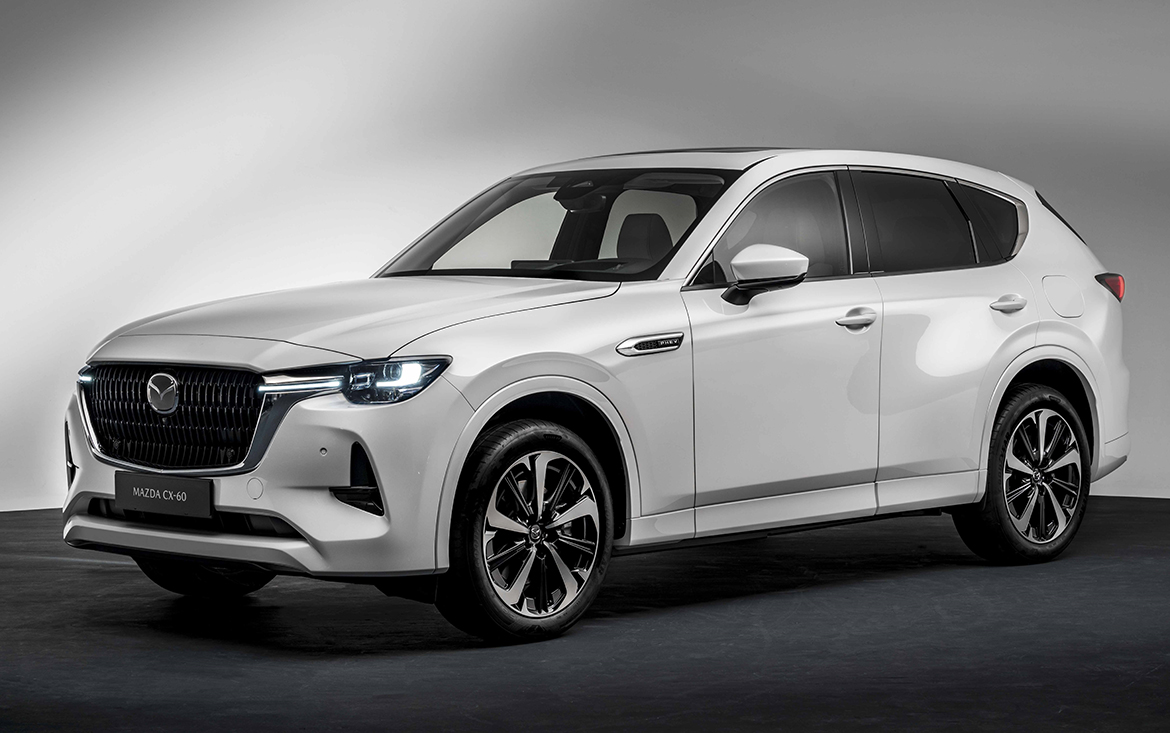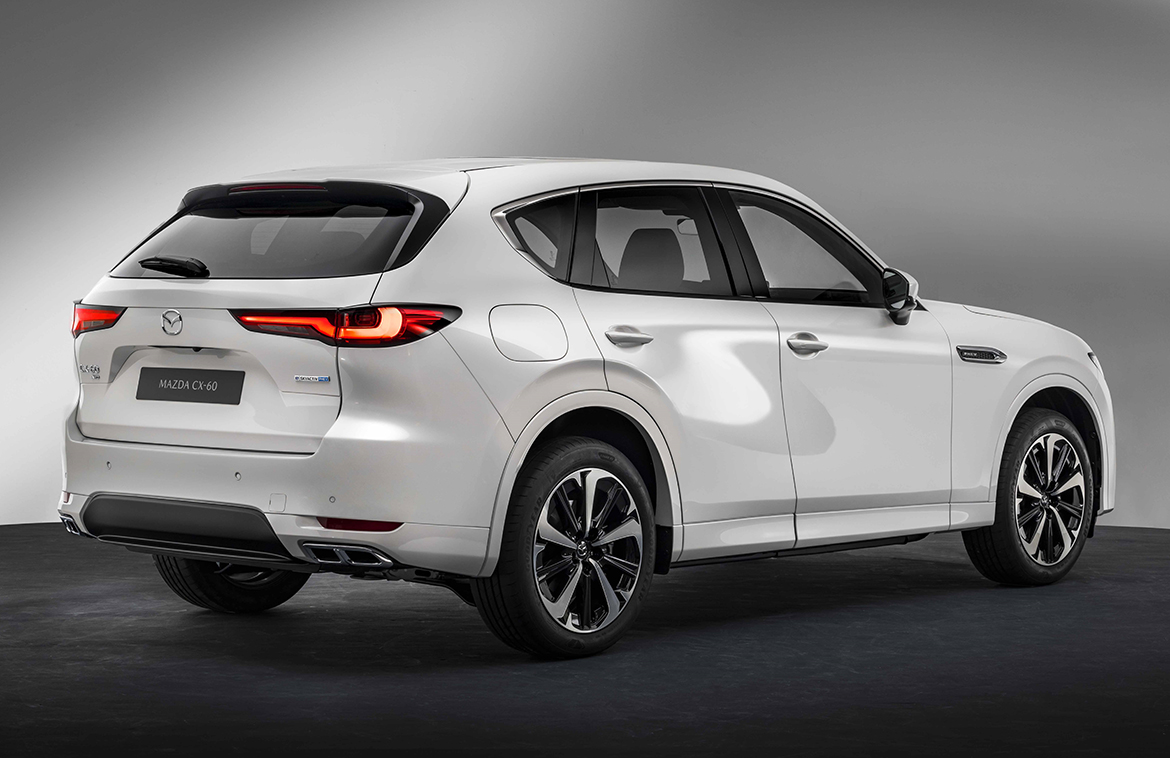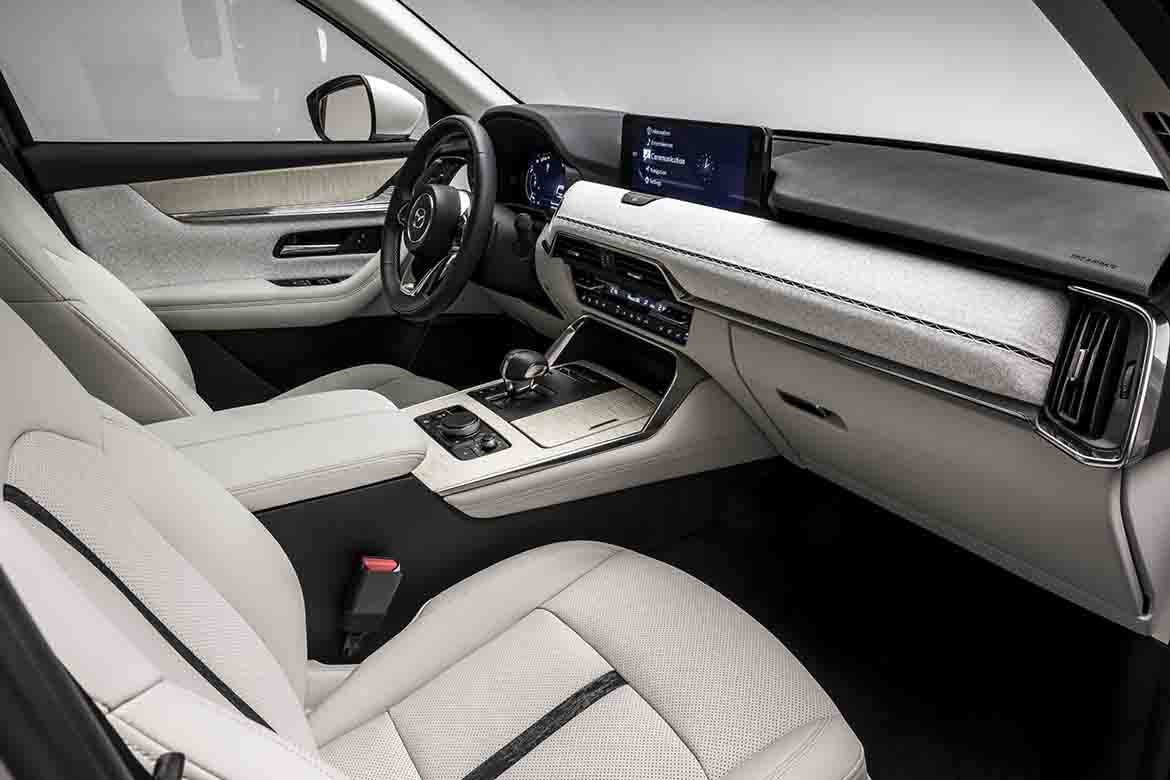Mazda unveils the CX-60, a model that marks the entry of the Japanese manufacturer in Europe in the segment of large SUVs. The design is the result of the collaboration of Mazda style centers in the world between Europe (led by Jo Stenuit), United States and Japan. The CX-60 evolves Mazda’s “Kodo-Soul of Motion” design philosophy, which entered phase two with the launch of the Mazda3. For its flagship SUV, the Japanese brand took on the challenge of creating a design that instantly reflected the improvement and further progression of Kodo design.
At the front, the grille has been modified to highlight the height of the model, which features an elongated nose to accommodate inline-six engines as well. The CX-60 adopts the new Large Platform with rear-wheel drive and longitudinal engines. The distinctive front wing now features lighting functionality to further accentuate the grille’s powerful appearance, while the headlamps, unlike previous models, have vertically developed lights and an L-shaped light signature.
The interior of the CX-60 shows a new design, evolutionary and not a complete break with the other models in the range. From the slider on the large central tunnel, the infotainment system is controlled by a display located high up in the center of the 12.3-inch dashboard. Even the instrumentation is digital and fully reconfigurable, while some details such as the style of the gearshift recall what we saw on the electric MX-30. For the materials chapter, the maple wood trim treatment reflects Hacho’s Japanese aesthetic: asymmetrical balance or intentional irregularity. Different patterns and yarns of woven fabrics respond to changes in light, and a Japanese stitching technique called Kakenui creates “hanging” seams with spaces between trim fabrics that reveal a glimpse of the material beneath.













